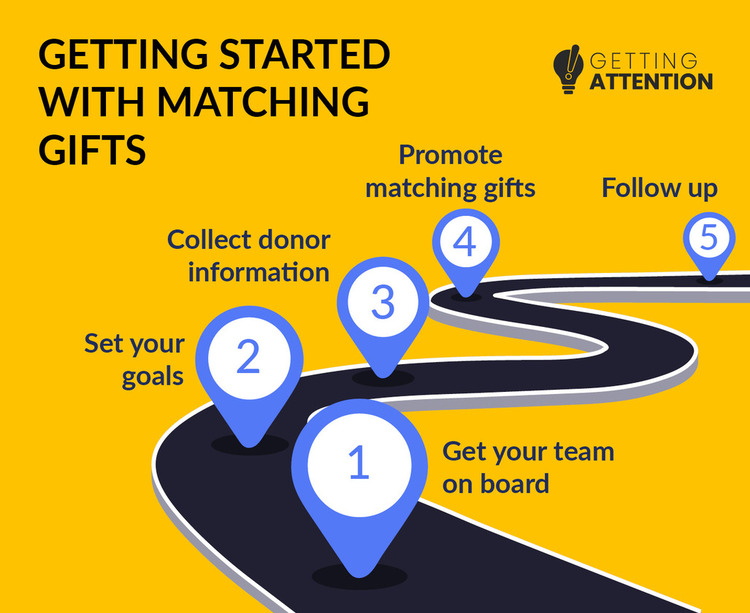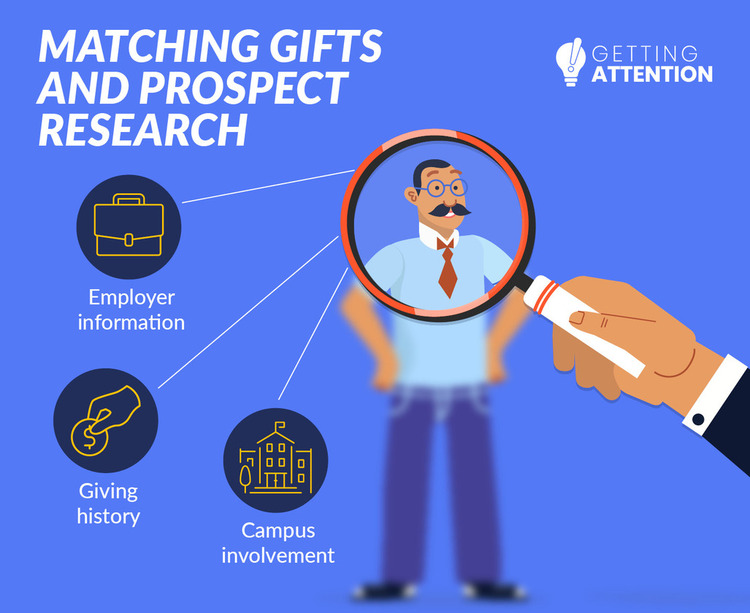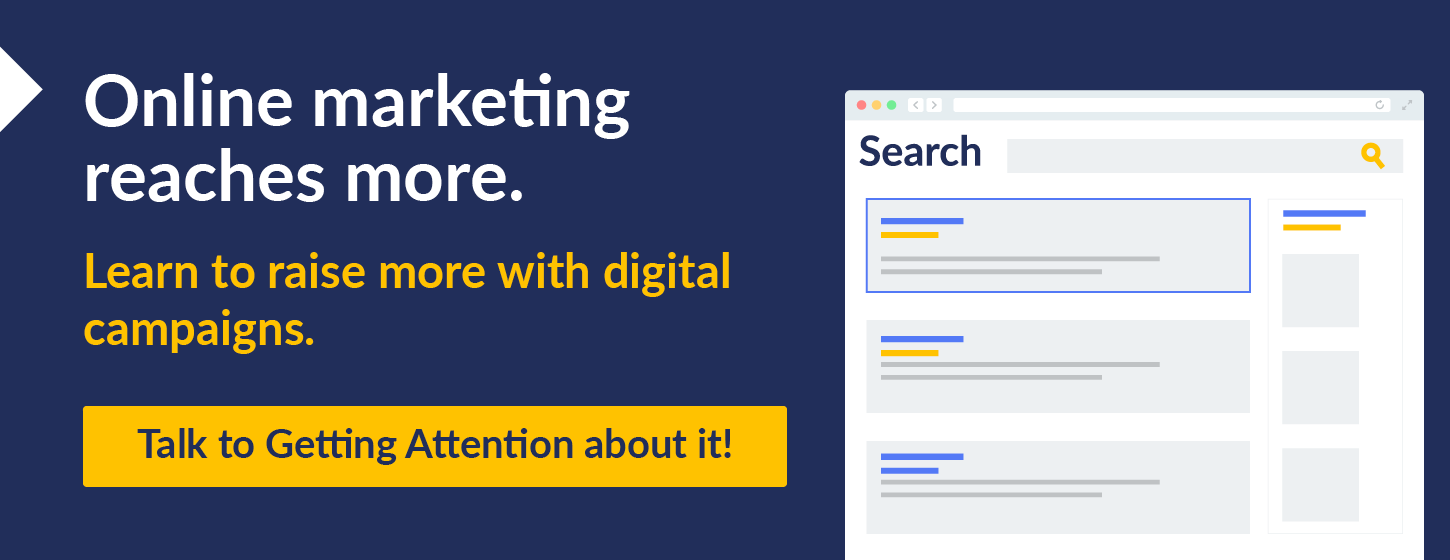How to Win With Matching Gifts And Higher Education: A Guide
If you work for a higher education institution, you know that marketing your mission is essential to bring in generous donations that fund your school. But did you know you could maximize existing donations through corporate matching gifts?
To pair matching gifts and higher education, you need an actionable plan. That’s where this guide comes in. Here’s what we’ll cover:
- How to Get Started With Matching Gifts for Higher Education
- How to Promote Matching Gifts and Higher Education
- Matching Gift Tools For Your School
- 5 Higher Education Institutions That Mastered Matching Gift Initiatives
Double (and even triple!) your donors’ generous contributions to maximize funding for your institution. Let’s dive in to learn how!
How to Get Started With Matching Gifts for Higher Education
When it comes to minimum or maximum gift amounts, gift ratios, and all other matching gift logistics, you might think everything is determined by the donor and their employer. Think again! Your school can pave the way to accepting matching gifts by following these five steps:

1. Get your team on board with matching gifts.
Before you can effectively promote matching gifts to your institution’s donors, it’s important to build a solid internal foundation, starting with your fundraising and development team members! Prepare your team for matching gifts by:
- Presenting all the details: Host a meeting about matching gift fundraising. Explain what it is, the most effective way to implement matching gift fundraising, and how it will help your school achieve its goals.
- Providing team-wide training: Teach the team how to raise matching gifts and how the new initiative will be incorporated into their roles.
- Incorporating matching gifts into onboarding: Once your existing team is up-to-date, implement matching gifts training into the onboarding process for new team members as a part of your updated processes.
When you set apart time for team-wide training on matching gifts, you’ll help everyone see the enormous potential of the initiative.
2. Set Your Goals
HubSpot’s goal-setting guide highlights a study that shows that 76% of people who write down their goals and make a list of goal-driven actions achieve what they set out to do. Craft a plan that details your matching gift revenue goals for the year, how you’re going to meet those goals and stay on track, and any deadlines you’ll want to meet in the process.
Consider the SMART goal framework to craft well-thought-out and detailed objectives to follow:
- Specific: What exactly are you looking to achieve?
- Measurable: What number would designate success?
- Attainable: How realistic is your goal?
- Relevant: How is your goal related to the initiative?
- Time-bound: What is the deadline for reaching your goal?
For example, “Our matching gifts goal is to collect $10,000 in completed company matches by the end of 2022.” With tangible objectives in place, your team is in a better position to actively work toward those goals.
3. Collect Donor Information
When it comes to matching gifts for higher education and otherwise, donor information is critical. Let’s say you’re performing prospect research to find major donors for your university. As you do this research, include a matching gift specification to target alumni working for companies with matching gift programs. You might look for:

- Employer information: What companies do your prospective donors work for? Do these companies offer matching gift programs?
- Giving history: Consider your engagement with the alumni who work at companies with matching gift programs. Have these alumni donated to your institution before? If so, how much and how often do they give?
- Campus involvement: Categorize alumni by their activities during their time as a student. Were they involved in any clubs or activities that might point to an affinity for your school’s mission?
Thorough donor research enables your team to locate high-value matching gift opportunities and leverage an informed perspective of your donor’s capacity to give.
To take your donor research to the next level, request employer appends. For higher ed universities especially, employer appends can be helpful to determine graduation year, email address, or any other missing data that would inform you of your donor’s matching gift eligibility and donation history.
4. Promote the Opportunity
Next, tell people about the opportunity to give! After collecting information about your donors, use a donor database to track all the details you’ve collected. Then, you can segment your communications to ensure different groups of people receive relevant communications.
Whether you’re reaching out to new alumni, older alumni, small- or large-dollar amount donors, or donors who work for top matching gift companies, every message should be different. Consider incorporating the following details into your communications to make personalize your messaging:
- The donor’s name (or preferred nickname)
- Their previous engagement or most recent donations
- Information about their employer’s specific matching gift program guidelines
Sending your donors highly personalized outreach is an effective way to encourage them to participate in their employer’s matching gift program. After all, when you customize your communications to individual donors and create targeted campaigns, you’re more likely to find higher engagement and response rates from your donor pool.
5. Follow Up
After promoting your matching gift initiative, donations should start rolling in. Following up with donors is important for supporter engagement and capturing as many donations as possible, so you should consider it another step in the matching gift process!
Your donors want to know your institution appreciates their gift and that you value them as a supporter, alumni, or whatever their relationship may be. Here are a few keys ways you can do this:
- Thank your donors for the initial donation. This might seem obvious, but it’s worth mentioning. Thank your donors immediately for their donations. Email is the quickest and most efficient way to do this, but you can also send a printed letter in addition to the initial email confirmation, depending on their donation level and your institution’s budget.
- Thank your donors for submitting a match request. If you’ve been tracking which donors submit a match request to their employer (which you should be!), make sure you thank them for getting the matching process started. This is a huge step they’ve taken to make their donation go twice as far, so showing your appreciation is crucial.
- Thank your donors after the company match has been received. Once the company’s matching donation has come through, you owe it to your donors to update them and thank them once again. Let them know their donation has gone twice as far and how much of a difference this has made for your school. This also serves as a point of reference for them so they understand how long the process actually takes.
On the other hand, some people will look into matching gifts and fail to follow through with a donation. Your school can seamlessly reach out to these potential donors and follow up through a matching gifts automation platform.
360MatchPro by Double the Donation’s automated platform tracks matching gift submissions from start to finish. When donors give a gift on your donation form, the platform determines their eligibility for a matching gift using the information they provided. If it finds a link between a donor and a matching gift program, it will trigger a follow-up email to the donor explaining how they can submit a match request.
You’ll be able to choose how often follow-up emails go out and easily track any incomplete matches. That way, your team will be able to spend more time on high-value matching gift opportunities and see more requests through to completion.
How to Promote Matching Gifts and Higher Education
According to Double the Donation’s matching gift statistics, 84% of donors say they’re more likely to donate if a match is offered—but 78% of donors don’t know if their company offers a matching gift program! That’s why promoting matching gifts and program basics is extremely important.
Your key audience: alumni donors. If you’re keeping tabs on the employment statuses of your students after graduation, you already have a robust database of potential donors. Plus, those with a connection to your school and its mission will be more motivated to give.
How can you promote matching gifts to alumni donors? Here are a few ideas:

- Email communications. Whether you’re sending out an email to thank a donor for their specific gift or sending out an alumni newsletter, it’s important to include information about matching gifts to raise awareness about this giving opportunity.
- Text messages. For a more personal outreach method (and to guarantee your message will be seen), send a direct text message. This is a great channel to use when bringing up matching gifts since everyone checks their text messages! Plus, matching gifts are so easy to explain, you can grab people’s attention with just one, short text.
- Direct mail. You likely already send direct mail to students and alumni, so it should be easy to incorporate matching gifts into this communication channel! Include a flyer within your other mailings or send out a postcard that specifically highlights matching gift opportunities.
- Website. Your website is the hub for all information about your school and various fundraising initiatives. For matching gifts specifically, it might also host your donation form or auto-submission tool. Set up a dedicated matching gifts page to prominently feature matching gifts on your institution’s website.
As an added bonus, you can use other marketing techniques to promote information about your matching gift initiative. For example, promote your landing page on Google to help alumni stumble upon it, even if they’re searching for something else! If search engine marketing (SEM) is the route you want to go, check out Google’s grant program for educational institutions.
Be sure to demonstrate the impact donations and matching gifts will have on your school. This means specifically noting what certain dollar amounts will go toward.
For example, will $200 go toward new books for the school library? Will $500 go toward establishing a new student scholarship fund? Associating dollar amounts with a tangible item will encourage more donations, which could then be amplified by a company match!
Matching Gift Tools For Your School
Setting goals, promoting matching gifts, and every other step of starting a matching gift initiative can actually become easier if you invest in matching gift software for your school. The right tools will streamline the entire matching gift process from start to finish.
How? Matching gift software gives you direct access to a matching gift database, which offers information on thousands of companies with matching gift programs. Here’s how it works:

The software’s company name search tool can be embedded anywhere on your website. It allows donors to quickly look up their company’s matching gift program without needing to ask their HR departments or look it up on their own (or even more importantly, without leaving your website).
After making their search, the tool will immediately populate with essential info about the company’s program, such as:
- Employee eligibility
- Nonprofit eligibility
- Minimum and maximum match amounts
- Match ratios
It will also typically include a link to the company’s matching gift forms so your donors can fill out the match request right then and there. Immediacy is important—donors are most engaged with your school as they’re donating, so offering them a direct link to the necessary forms at that moment will result in more completed match requests.
5 Higher Education Institutions That Mastered Matching Gift Initiatives
Everyone prefers different learning styles, from auditory resources to hands-on learning experiences. If you’re a visual learner, we’ve compiled a list of matching gift initiative examples—that way, you can look at universities that did it well and understand how they succeeded!
These five universities exemplify effective fundraising through matching gifts by utilizing:

- University branding
- Easily accessible navigation
- Matching gift information
- Matching gift submission options
- Company search tool
- Extra contact information
These five institutions mastered their website’s matching gifts pages and even leveraged other digital marketing channels to draw attention to their matching gift initiatives. Let’s take a look at each one in closer detail!
1. University of Georgia
The University of Georgia made our list because its dedicated matching gifts page offers both educational and actionable information to encourage donors to submit a match request. Here are the top things to note about their page:
- It’s easily accessible: Users can find UGA’s matching gifts page from the navigation bar (How to Give → Matching Gifts), even if they weren’t looking for it.
- It’s visually appealing: The page immediately captures attention with a graphic that illustrates how matching gifts can maximize impact.
- It leverages a company name search tool: UGA has embedded a company name search tool from Double the Donation, which makes it easy for donors to find the information they need about their employer’s matching gift program.
- It’s informative: UGA’s matching gift page outlines simple instructions for submitting a matching gift, as well as a contact form for any additional questions. They also list some top providers who match donations and matching gift contact information for anyone with questions.
However, UGA’s matching gift efforts aren’t just limited to this page. They’ve also embedded the same matching gift search tool into their donation form, and the tool is branded to match the rest of their page.
UGA sends out automated emails once a match-eligible donor has submitted their donation. This email identifies the donor’s employer and offers direct links to start the matching gift submission process and indicate their status. Additional information about their employer’s matching gift program is listed in the email, as well.
2. Carnegie Mellon University
Carnegie Mellon offers actionable verbiage and options to encourage donors to match their gifts through their employers. Their matching gifts page is easily accessible from their “Give” page (Ways to Make Your Gift → Matching Gifts). It offers:
- Brief but useful information about matching gifts, along with instructions on how to submit a matching gift directly to the university or process it online.
- An embedded search tool (also from Double the Donation), automatically pulls up company names and information once the donor starts typing in it.
- Contact information, including a phone number, email address, and mailing address, for those who have questions and want to reach out to CMU’s Gift Administration office
But again, the matching gift information isn’t limited to this page. On CMU’s donation form, there’s a checkbox where donors can indicate “My company will match my gift.” If selected, an option to search for the donor’s employer pops up along with the company name search tool.
Carnegie Mellon does an exemplary job of educating their donors and web visitors about matching gifts and guiding them through the process.
3. Utah Valley University
Another great example of a higher ed institution that puts matching gifts front and center during their cultivation and donation process is Utah Valley University. Here’s what their matching gifts page does well:
- It’s easily accessible from the menu of their main Institutional Advancement page (Ways to Give → Matching Gifts).
- It provides matching gift basics, including a brief but precise description of what matching gifts are and how donors can search for their company to determine their own eligibility.
- It includes a company name search tool donors can use to look up their employer’s program.
- It makes additional help easy to find by displaying the name and contact information of the Director of Annual Giving.
For supporters who are ready to make a donation, UVU offers the same search tool on their donation page. The tool matches the rest of the form and helps donors find their company guidelines on a subsequent page:
UVU also sends out automated emails to donors who have been identified as match eligible. This email identifies:
- The donor’s employer
- The steps they can follow to submit a match request
- Additional contact information
- Extra information about the specific company’s guidelines
UVU offers numerous ways for donors to learn about matching gifts through multiple channels, as well as provides actionable tools donors can use to submit their match requests.
4. Syracuse University
As soon as donors land on Syracuse University’s matching gifts page, they’re greeted with helpful information about corporate matching gifts and a company name search tool. The page’s top benefits include:
- Straightforward instructions: Donors can follow the brief and easy instructions on the page to search for their company and click on the appropriate button to submit a match, if they’re eligible.
- Notable branding: Every element is branded to match the university’s colors, creating a consistent experience for donors and a visually appealing page and form.
- Prominent call-to-action: To get visitors started on the donation process, the page urges donors to “Give now!” with a prominent button that leads them straight to the donation form.
Syracuse also sends out automated emails to match-eligible individuals who have completed a donation. The emails include specific information about the employer’s matching gift guidelines, including their:
- Match ratio
- Minimum and maximum match amounts
- Employee eligibility
- Deadlines
Syracuse does an excellent job maintaining a consistent brand, communicating with donors, and guiding them through the matching gift process.
5. University of Michigan
The University of Michigan’s matching gift page can be accessed from the navigation bar of the university’s philanthropy website (Giving → Make an Impact → Matching Gifts). From there, the page offers information about different ways to submit a matching gift request:
- Use their embedded company name search tool. Donors can read the step-by-step instructions on the page before using the search tool and beginning the gift process.
- Reach out to the employer directly. The page notes that donors can contact their employer’s human resources department to learn about the company’s matching gift program and the procedures for making a gift.
- Contact the university. Donors can direct their matching gift questions to the university via email, phone number, or direct mail.
The University of Michigan offers substantial information to its supporters to ensure they understand what matching gifts are, how to determine their eligibility, and what steps they can take to submit a match request.
Additional Matching Gifts and Higher Education Resources
The learning process is never over! If you’re part of a higher education institution and you’re looking for ways to boost your fundraising efforts (with matching gifts or other strategies), check out the following resources:
- The Ultimate Guide to Securing Corporate Sponsorships. There are numerous ways your institution can find corporate partners to sponsor your work! Check out this guide to learn more.
- Digital Marketing for Nonprofits Made Easy: A Guide. Interested in other ways to promote your school’s mission and raise support for your fundraising needs? Explore this guide to digital marketing for more tips on establishing your digital presence.
- 110+ Incredible School Fundraising Ideas (Raise Money Now!). Want more tips to fundraise for your school? Check out Double the Donation’s list of fundraising ideas for schools and universities!






